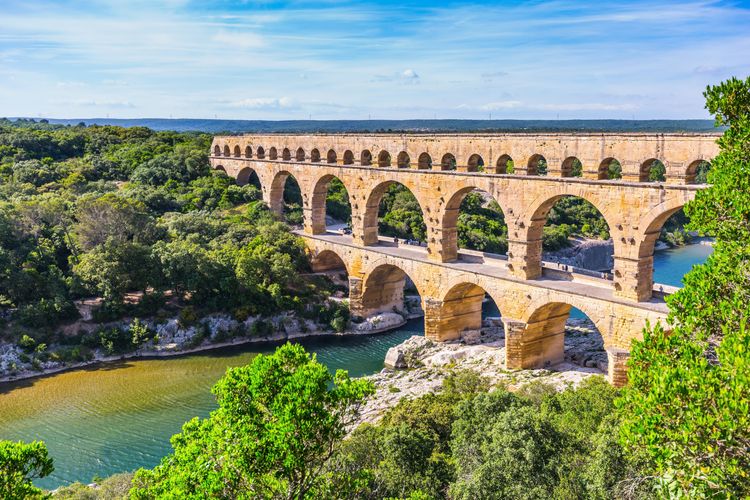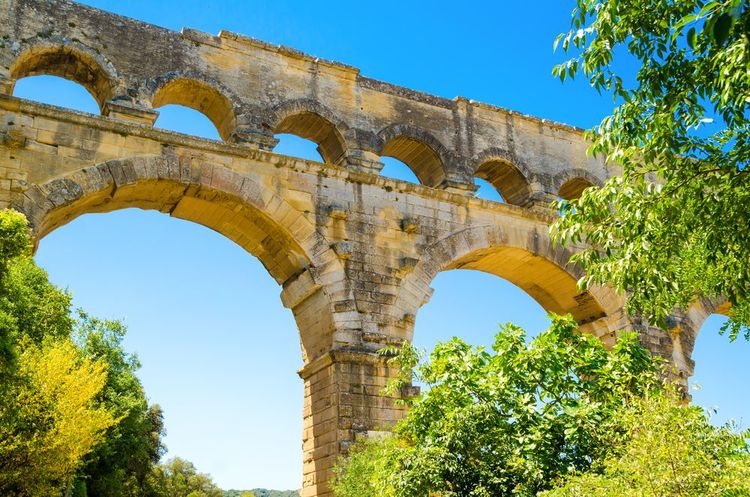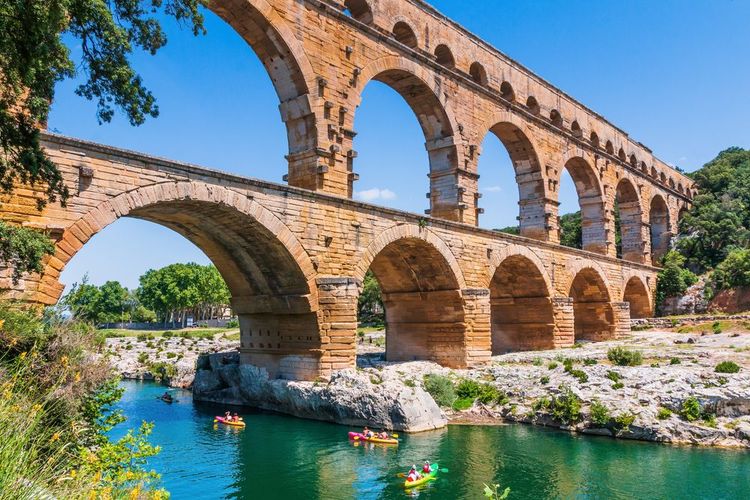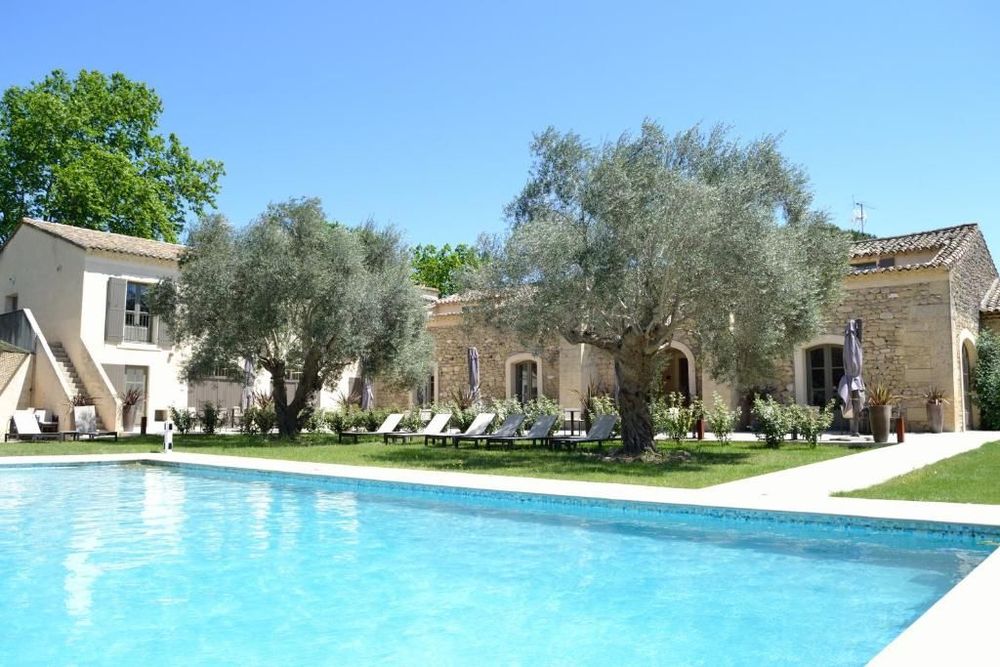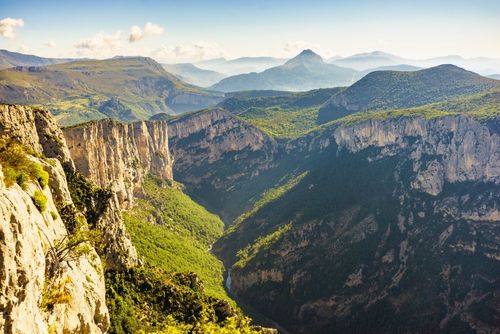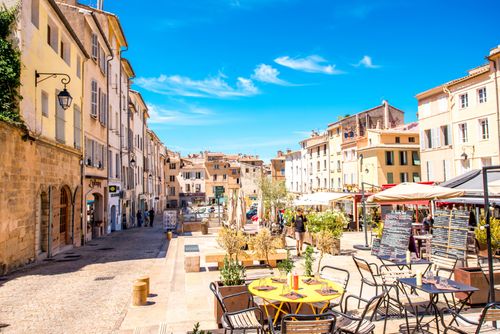Built by the Romans around 50 AD, the Pont du Gard is the largest aqueduct bridge in the Roman world, and the only ancient three-tier bridge still standing today. It is made up of three rows of arches one above the other (47 arches at the base, 11 on the second level and 6 on the first level) and is 48 metres high and 273 metres long. At the time, the city of Nîmes took its cue from Rome, the model of the Roman Empire, and decided to build an aqueduct to supply the city with water.
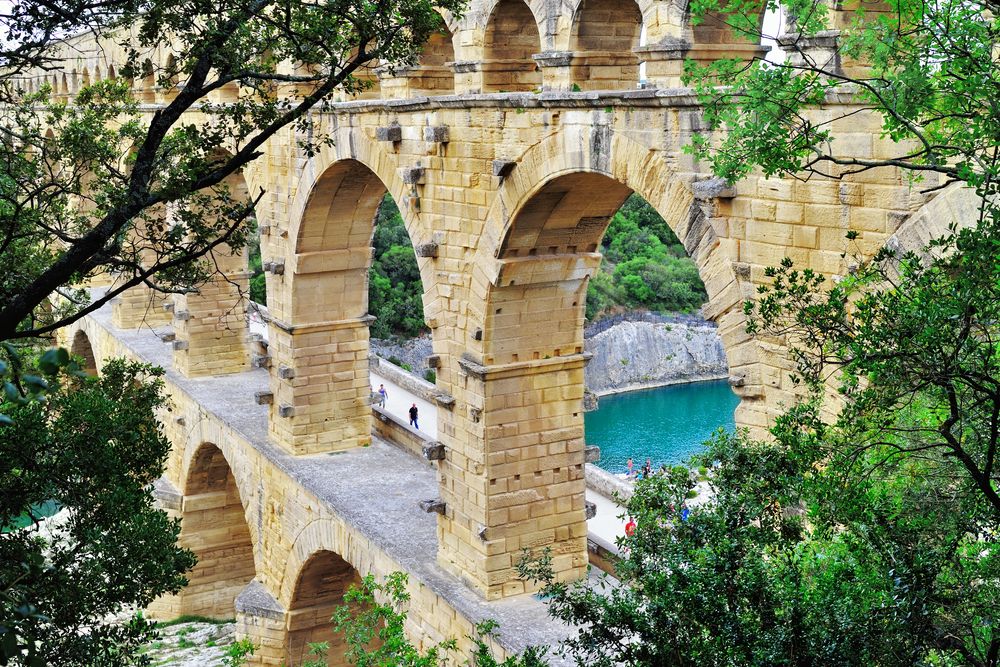 Pont du Gard
Pont du Gard
